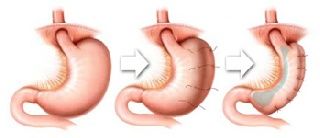Obesity is a growing epidemic worldwide, with approximately 39% of adults being classified as overweight and 13% as obese. Obesity is associated with a range of health problems, including type 2 diabetes, heart disease, and certain types of cancer. Weight loss surgery, also known as bariatric surgery, is a treatment option for individuals with obesity that has been shown to be effective in achieving long-term weight loss and improving obesity-related health conditions. In recent years, laparoscopic weight loss surgery has become the standard of care, offering patients a minimally invasive alternative to open surgery. In this essay, we will explore investigational laparoscopic weight loss surgery, including its types, procedures, and potential benefits.
Types of Investigational Laparoscopic Weight Loss Surgery
There are several types of investigational laparoscopic weight loss surgery that are currently being studied. These include:
-
Endoscopic sleeve gastroplasty (ESG): ESG is a minimally invasive weight loss procedure that involves the use of an endoscope, a long, flexible tube with a camera and light, to reduce the size of the stomach. During the procedure, the endoscope is inserted through the mouth and down into the stomach. Once in the stomach, a series of sutures are placed to create a sleeve-like structure that reduces the size of the stomach and limits the amount of food that can be consumed.
-
Laparoscopic adjustable gastric banding (LAGB): LAGB involves the placement of a silicone band around the upper portion of the stomach, creating a small pouch that limits the amount of food that can be consumed. The band can be adjusted over time by adding or removing saline to change the size of the pouch.
-
Laparoscopic sleeve gastrectomy (LSG): LSG involves the removal of approximately 80% of the stomach, leaving a narrow tube or sleeve-like structure that limits the amount of food that can be consumed. The procedure is irreversible and results in long-term weight loss.
-
Laparoscopic Roux-en-Y gastric bypass (RYGB): RYGB involves the creation of a small pouch at the top of the stomach that is connected directly to the small intestine. The procedure restricts the amount of food that can be consumed and reduces the absorption of calories and nutrients.
Procedures and Techniques
Investigational laparoscopic weight loss surgery procedures are performed using minimally invasive techniques, which offer several advantages over traditional open surgery. These include smaller incisions, less postoperative pain, shorter hospital stays, and faster recovery times.
Endoscopic sleeve gastroplasty is performed using an endoscope inserted through the mouth and down into the stomach. Sutures are placed to create a sleeve-like structure that reduces the size of the stomach. The procedure typically takes less than an hour to complete, and patients can usually go home the same day.
Laparoscopic adjustable gastric banding involves the placement of a silicone band around the upper portion of the stomach. The band can be adjusted over time by adding or removing saline to change the size of the pouch. The procedure typically takes 30 to 60 minutes to complete, and patients can usually go home the same day.
Laparoscopic sleeve gastrectomy involves the removal of approximately 80% of the stomach, leaving a narrow tube or sleeve-like structure that limits the amount of food that can be consumed. The procedure typically takes 60 to 90 minutes to complete, and patients can usually go home within 1 to 2 days.
Laparoscopic Roux-en-Y gastric bypass involves the creation of a small pouch at the top of the stomach that is connected directly to the small intestine. The procedure typically takes 2 to 3 hours to complete, and patients can usually go home within2 to 3 days.
Potential Benefits
Investigational laparoscopic weight loss surgery has the potential to offer several benefits to patients with obesity. These include:
Weight loss: All of the investigational laparoscopic weight loss surgery procedures have been shown to be effective in achieving long-term weight loss. Studies have shown that patients can expect to lose between 50% to 70% of their excess body weight following surgery.
Improved health: Weight loss surgery has been shown to improve a range of health conditions associated with obesity, including type 2 diabetes, high blood pressure, sleep apnea, and certain types of cancer.
Improved quality of life: Weight loss surgery has been shown to improve overall quality of life, including physical functioning, mental health, and social functioning.
Reduced healthcare costs: Weight loss surgery has been shown to reduce healthcare costs over time by reducing the need for medications and hospitalizations for obesity-related health conditions.
Challenges and Risks
While investigational laparoscopic weight loss surgery offers many potential benefits, there are also some challenges and risks associated with these procedures. These include:
Limited availability: Investigational laparoscopic weight loss surgery procedures are currently only available through clinical trials, and not widely available for routine clinical practice.
Cost: Investigational laparoscopic weight loss surgery procedures may be more expensive than traditional laparoscopic weight loss surgery procedures.
Risks of surgery: All weight loss surgery procedures carry some risks, including bleeding, infection, blood clots, and anesthesia complications.
Complications: Investigational laparoscopic weight loss surgery procedures may be associated with specific complications, such as gastric perforation, bleeding, or device-related complications.
Conclusion
Investigational laparoscopic weight loss surgery offers an alternative treatment option for individuals with obesity who have not been successful with traditional weight loss methods. These minimally invasive procedures have the potential to offer significant weight loss and improvements in health and quality of life. However, there are also challenges and risks associated with these procedures, including limited availability, cost, and surgical and device-related risks. Further research is needed to fully evaluate the safety and efficacy of these procedures and to determine their role in the treatment of obesity.
